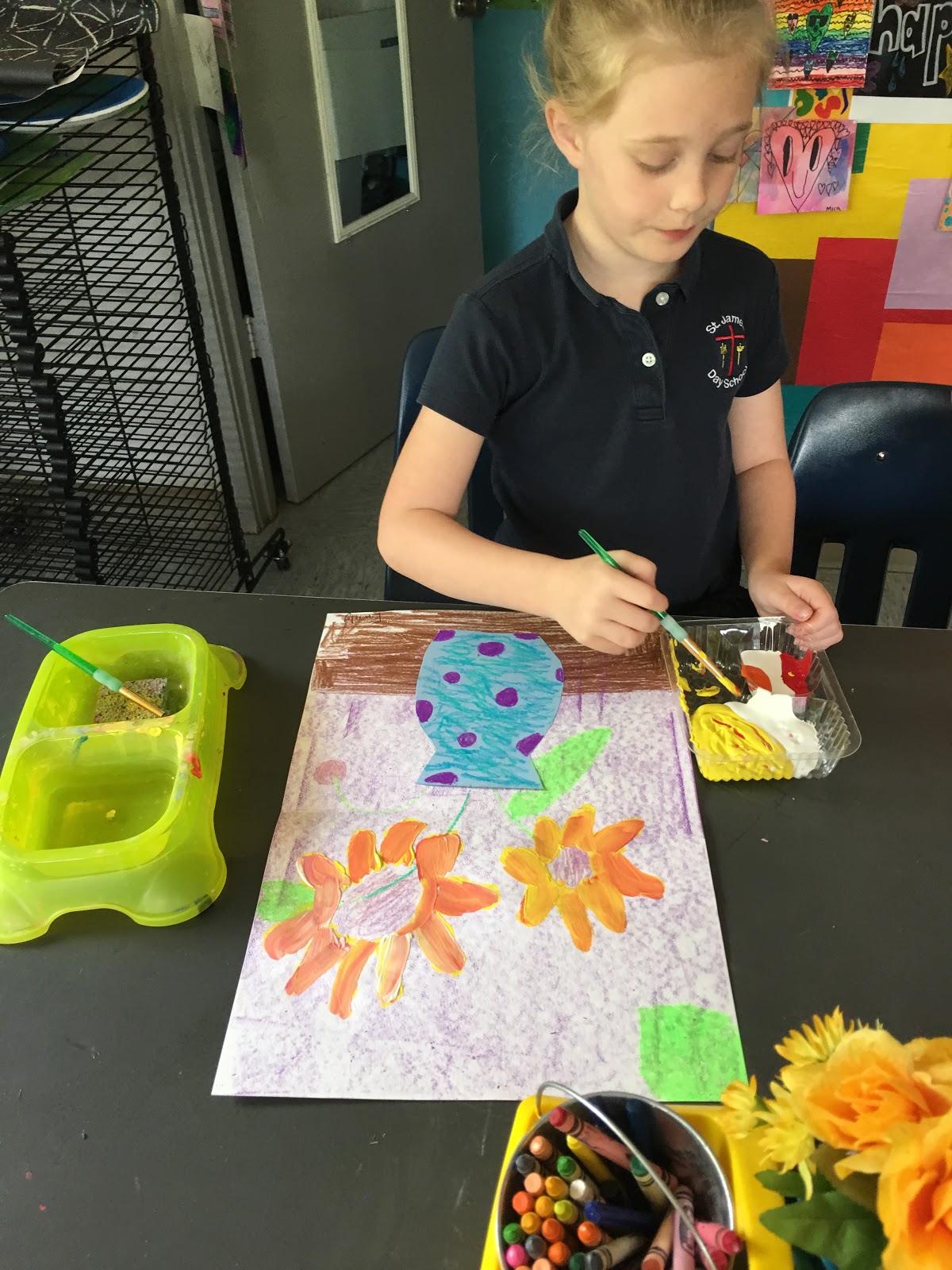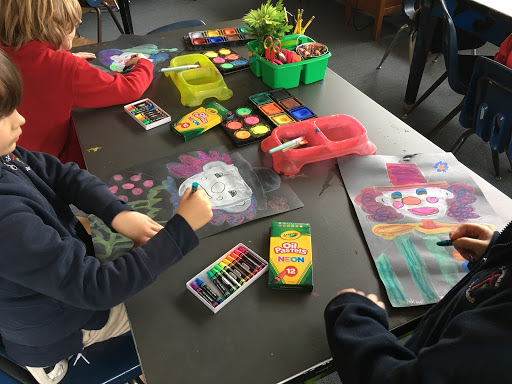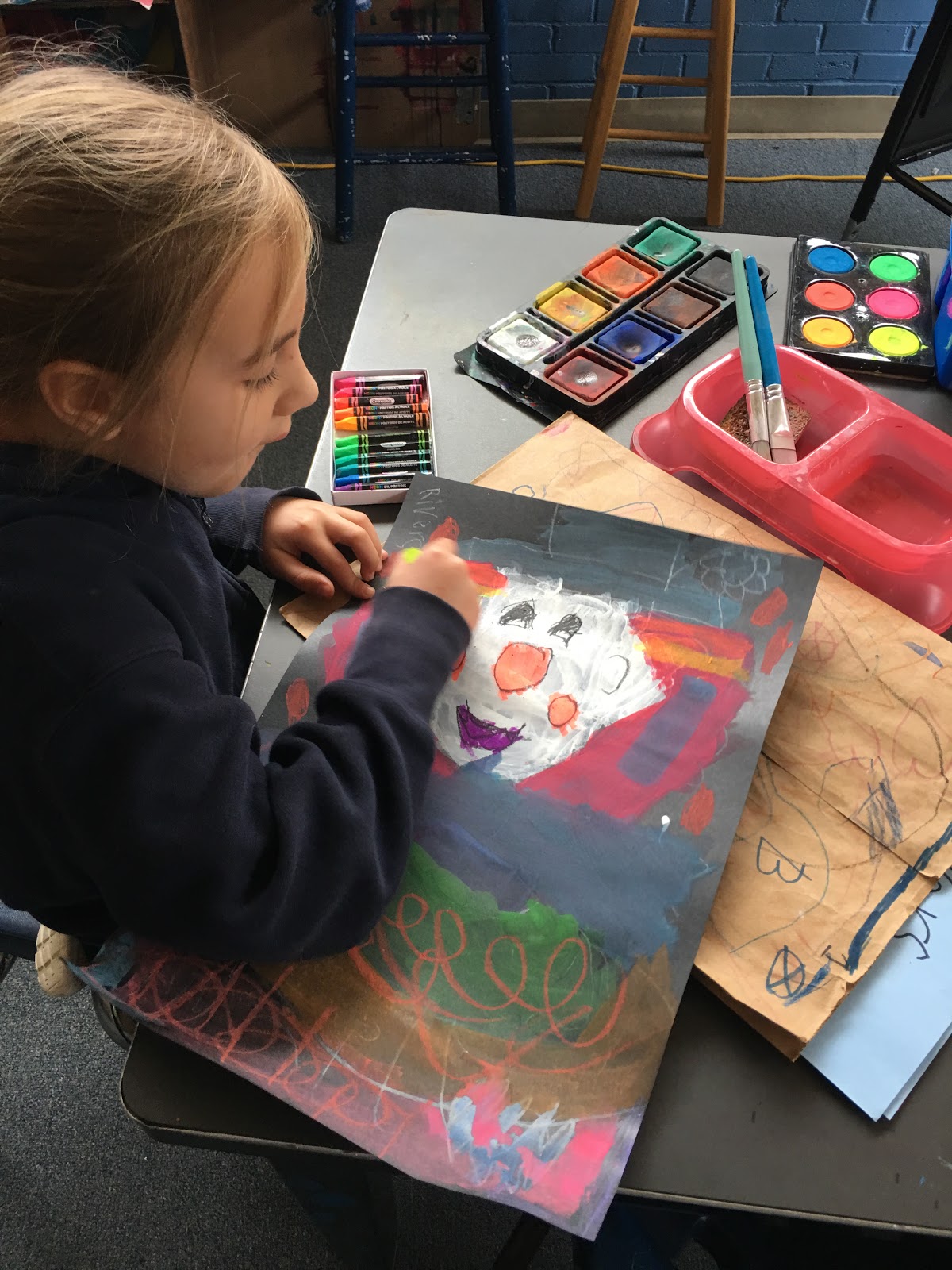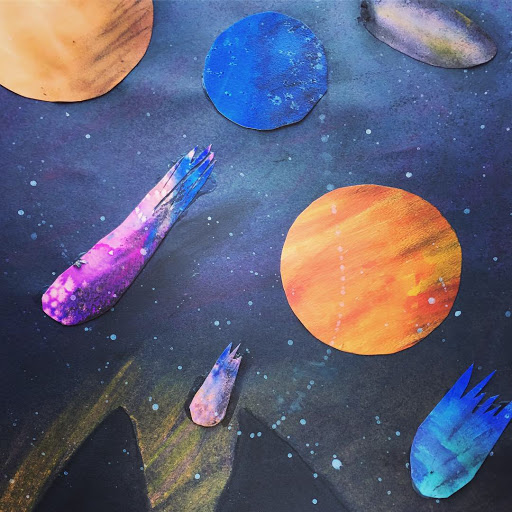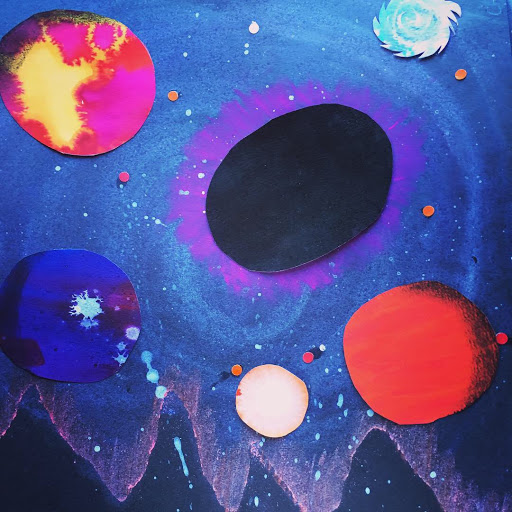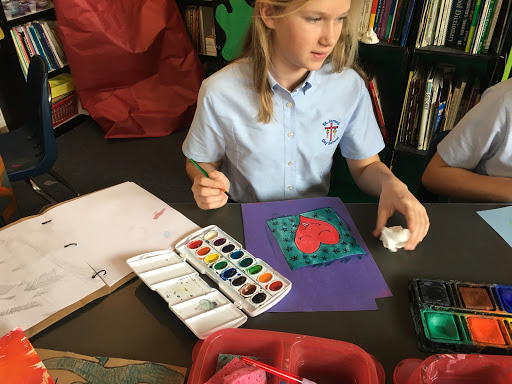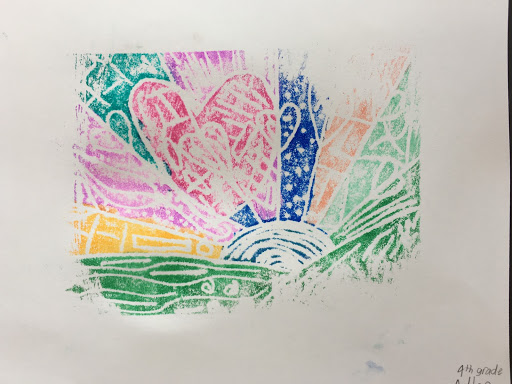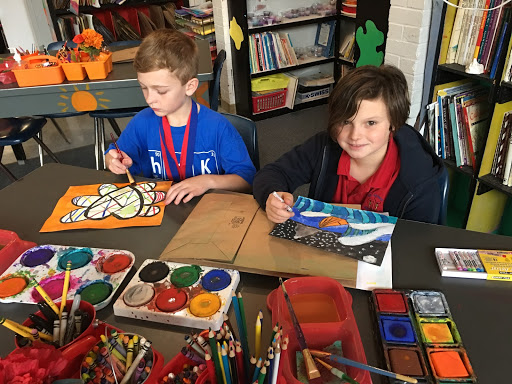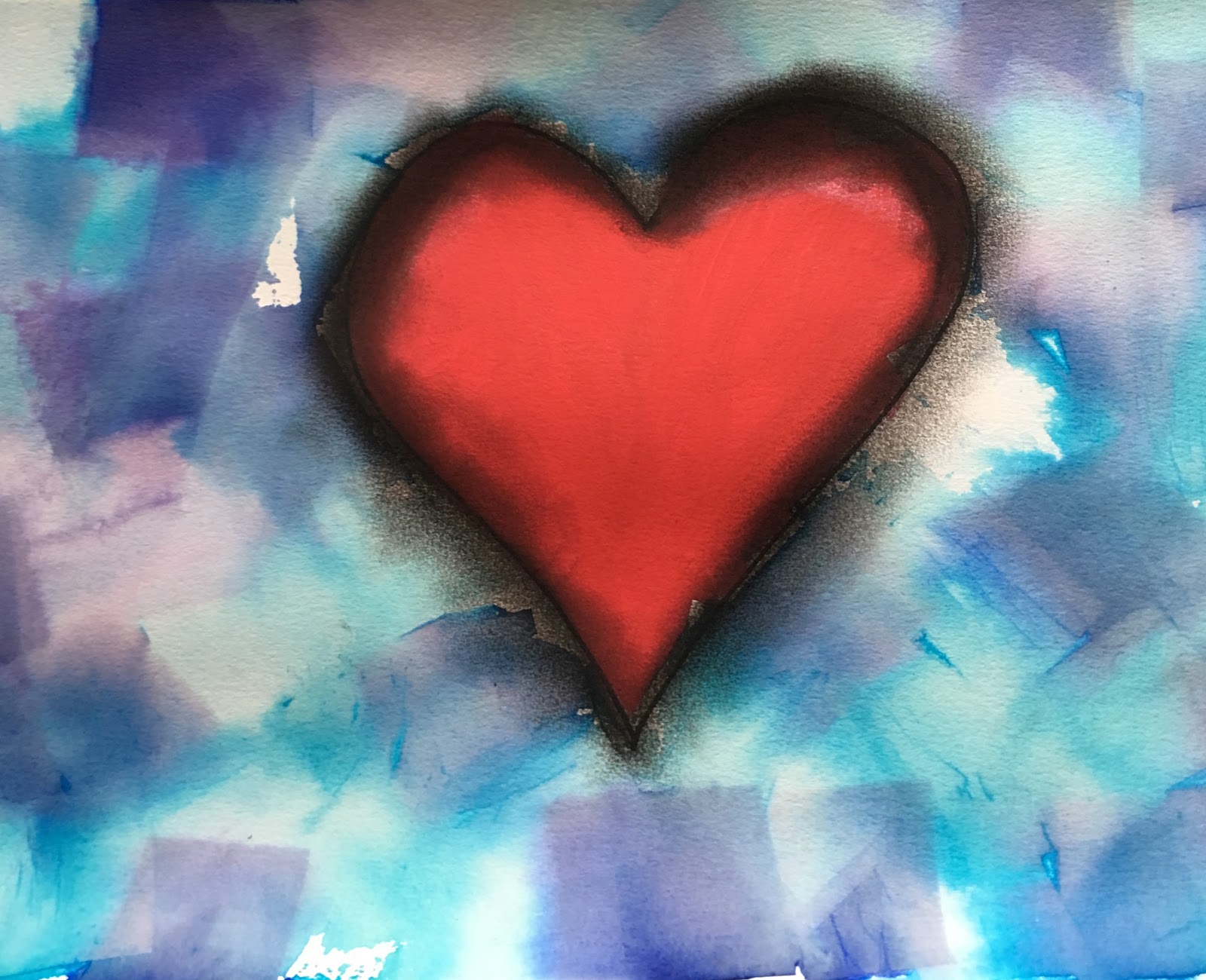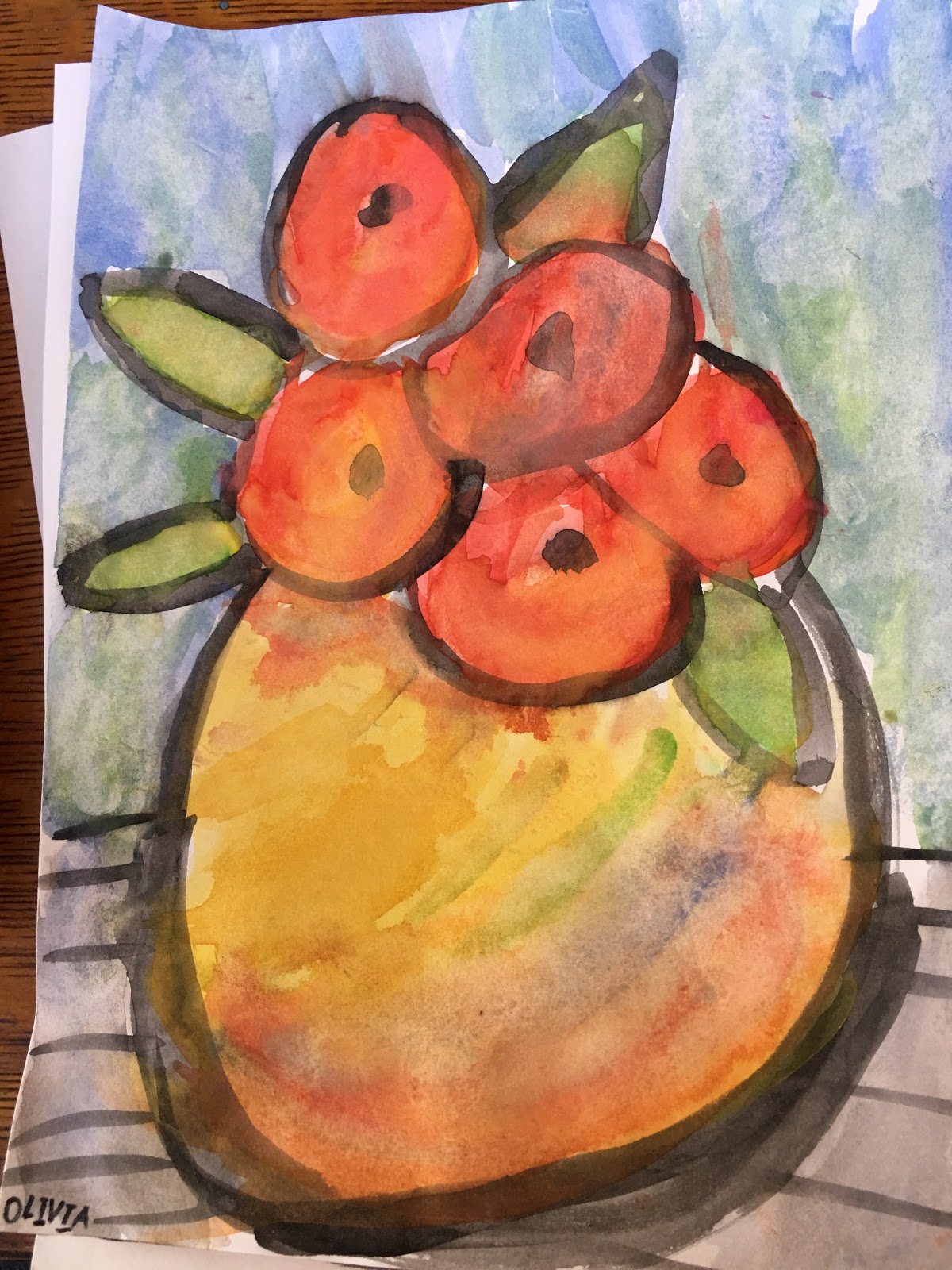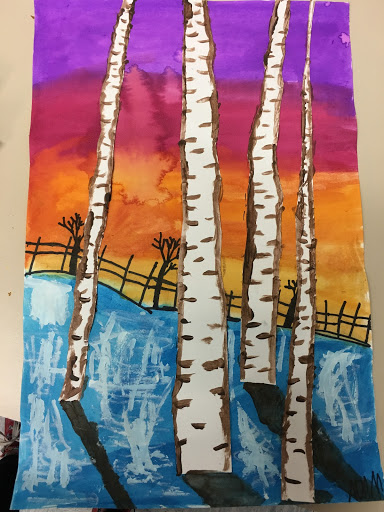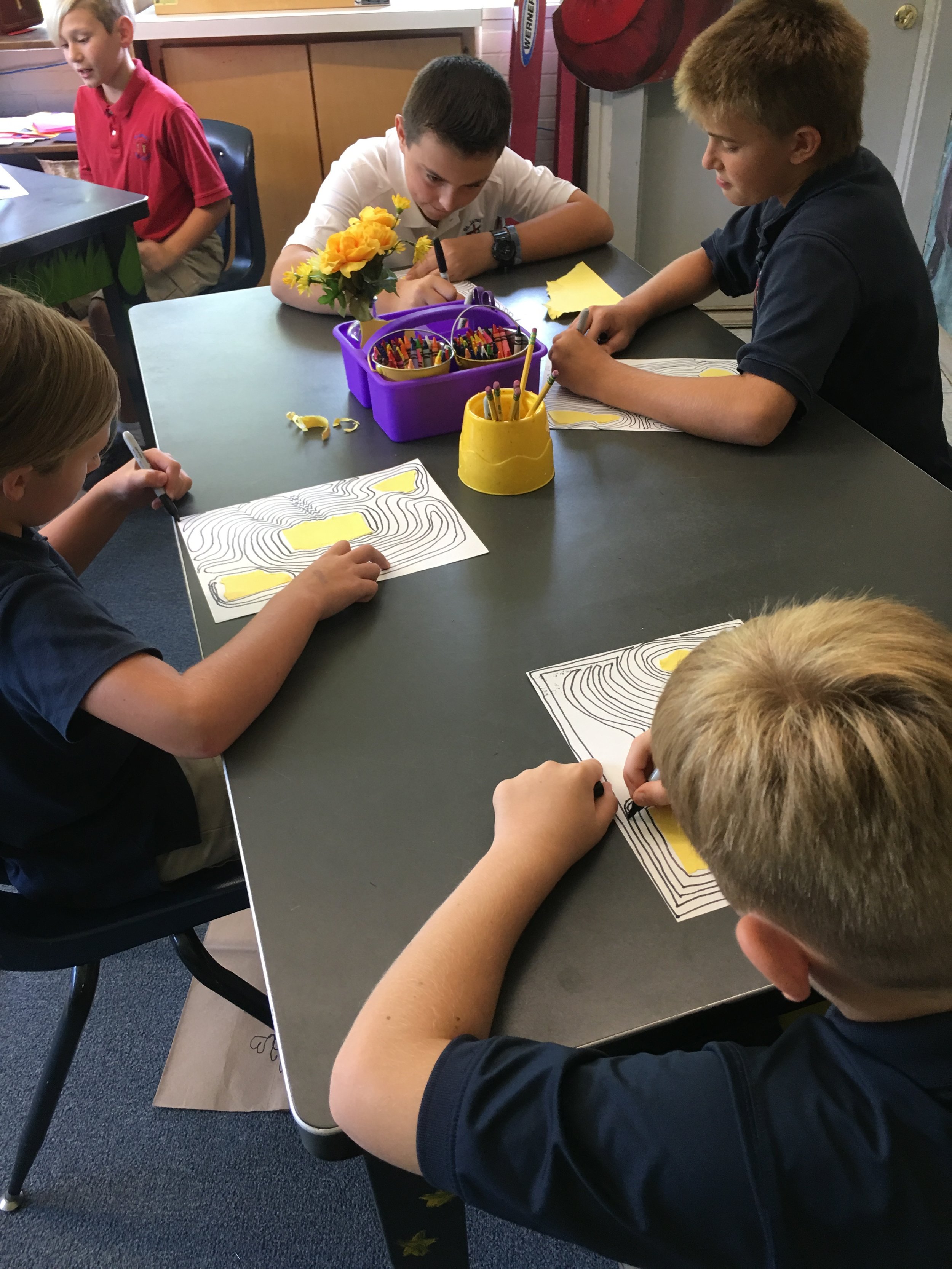What another wonderful beginning in ART! Kindergarten has already learned that they can draw anything if they use the five basic elements of shape: the dot and circle family; the straight line family; the curved line family; and the angle line family. As our yearly tradition of student drawn sunglasses finish up, we ready ourselves for them to be the first displayed art in the cafeteria (otherwise known as “The Louvre”). Soon the walls will have some amazing art pieces by our student artists! We have begun the year with reviewing the seven Elements of Art: Line, Color, Shape, Form, Texture, Space, and Value. These are what give us our art, along with imagination!
First Grade, using different designs and patterns, along with the five basic elements of shape, drew the hippest hippos! They are about to start drawing and painting trees to grace our cafeteria walls! Second Grade has been experimenting with different types of lines and the dot and circle family. They have created abstract art by listening and following verbal directions. What colorful and original art flowed from them as they honed their listening skills! They will soon be learning about artist Miro and how to do his overlapped abstraction art. The Third Graders have been reviewing and practicing the use of symmetry in art. They are using their paper cutting and designing skills to produce wonderful stained glass (actually paper) kites to hang in their room.
Middle School has also been hard at work reviewing all of the elements of art. Fourth Graders learned about famous cathedrals using Gothic architecture. Emulating the radial balanced design of the Rose Window, students made their own stained glass (paper) version. These will be gracing the windows in the cafeteria year round. This is almost a right of passage for fourth grade artists each year and a lovely tradition.
Fifth Grade has enjoyed experiencing contour drawing and blind contour drawing. A difficult but rewarding experience, blind contour drawing is done by keeping your eyes on the subject and drawing it without looking at your paper (much). They are about to begin Explorers in a Bottle, a great unit using design skills and portraiture that we do in conjunction with Fifth Grade’s Social Studies Class.
Sixth Grade has had a ball experiencing gesture drawing! Each student poses as the rest of the class attempts to quickly lay in the action, form, and pose of the model. Basically, it is a method of training hands to sketch what the brain has already seen. Staying “focused” means sustained concentration. They may take as long as two or three minutes, or as short as five seconds, depending on what the focus of the exercise is. The fast pace of gesture poses help an artist “loosen up” to avoid a stiff drawing style. Ask them to do one of you!

